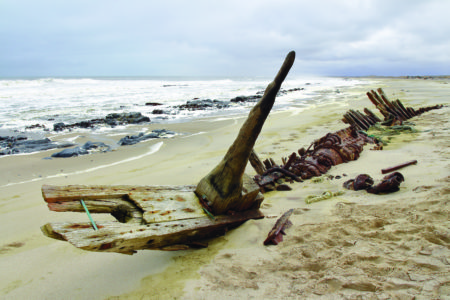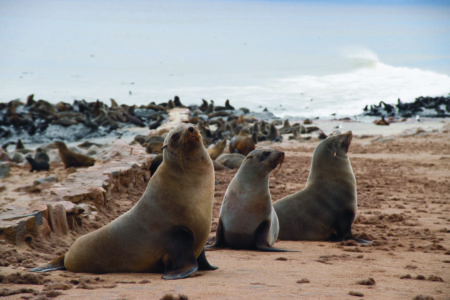The Skeleton Coast
Why are there so many shipwrecks to be found on the coast of Namibia?
Along the northern stretch of the Namibian coastline in western Africa, the desert sands are littered with the remains of ships and the bones of their ill-fated crew. The reason so many have met their fate on these shores is because of the region’s unusual climatic conditions.
The warm, dry air of the Namib Desert colliding with the cold water of the Atlantic’s Benguela Current creates a dense fog over the sea. The poor visibility combined with the strong force of the current and winds have made it difficult for ships to navigate safely along the treacherous coast, causing many to run aground. The crew members that managed to survive the initial wrecks were then faced with crossing the seemingly never-ending desolate desert wilderness in search of food and water.
Many sadly perished in the sweltering heat, but it’s not solely their remains that earned the Skeleton Coast its name. That came from the vast number of animal carcasses that washed up on the shore as a result of the whaling operations and seal hunting that were once common in the area. The harsh desert conditions have meant that the bones haven’t decomposed, and so can still be found alongside the human skeletons.

A ship wreck of another ill-fated crew on the Skeleton Coast. Image credit: Thinkstock
Wildlife of the Skeleton Coast
It may be inhospitable for humans, but the Skeleton Coast is home to a variety of animals that have adapted to the extreme conditions. Elephants, rhinos, lions, giraffes and springboks can all be found roaming the four main dry riverbeds that snake towards the coast, while jackals and hyenas scavenge for dead birds, fish and seals along the shore.
The latter belong to a colony of around 120,000 cape fur seals that take advantage of an Atlantic buffet created by the strong Benguela Current. As ice-cold water is forced up from the depths of the ocean, it dredges up masses of food for fish, which in turn provide a meal for the seals.

Wild Seals at Cape Cross Seal Reserve, Namibia. Image credit: Thinkstock
For more amazing science and technology news, check out issue 99 of How It Works. Pick up your copy from from all good retailers or from our website now. If you have a tablet or smartphone, you can also download the digital version onto your iOS or Android device. To make sure you never miss an issue of How It Works magazine, subscribe today!
Also read:




